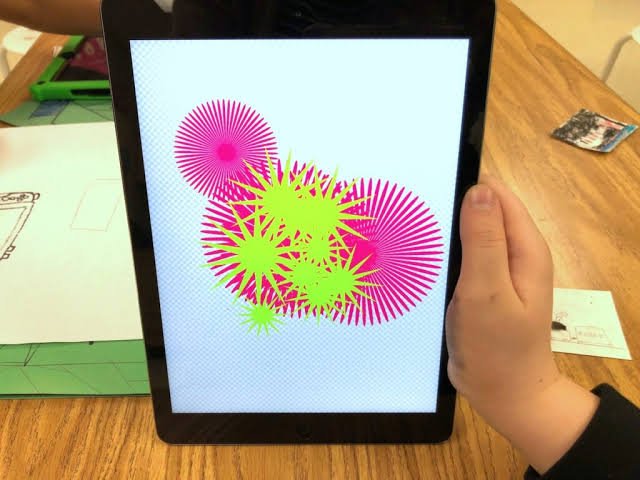How Technology Brings Art to Life for Students
In today’s world, technology and art are coming together in exciting ways, especially in education. This combination is making learning more engaging and accessible for students of all ages. Here, we explore how technology is enhancing the way art is taught and enjoyed in schools, following Google’s EAT guidelines which emphasize expertise, authoritativeness, and trustworthiness.
Virtual Art Galleries and Tours
One of the most thrilling developments is the ability for students to visit museums and art galleries from their classrooms or homes through virtual tours. Websites like https://ehallpassinsider.com/ allow students to see famous artworks up close, often with zoom features that offer views of details they couldn’t see even in person. This technology not only makes art accessible to more students but also helps them understand the context and history of the artwork without the need to travel.
Interactive Tools and Apps
Interactive apps have transformed art education by making it a hands-on experience. For example, drawing and painting apps provide students with the tools to create digital artwork using techniques that mirror those used with physical materials like paint and charcoal. These apps often include tutorials that guide beginners through the creative process, which builds their skills and confidence in art-making. Students can easily access these tools with a simple ehallpass login, integrating seamlessly into their school day.
Augmented Reality (AR) in Art
Augmented reality (AR) is another exciting technology that brings art to life. By using smartphones or AR glasses, students can see artworks superimposed onto the real world. For instance, students can explore how historical pieces of art would look in today’s settings, or see sculptures in three dimensions that are not physically present. AR makes art interactive and fun, encouraging students to explore more deeply.
Art History with Multimedia Presentations
Technology enables teachers to use multimedia presentations to make art history more engaging. Videos, animations, and interactive timelines can bring the stories behind artworks to life, making it easier for students to remember facts and understand the progression of art styles and movements. This multimedia approach caters to different learning styles and keeps students interested and involved.
Collaboration Through Technology
Technology also promotes collaboration among students, whether they are in the same room or across different countries. Online platforms allow students to work together on art projects, share their work, and receive feedback from peers and teachers. This collaborative environment fosters creativity and helps students learn to critique art constructively and thoughtfully. Using platforms like ehallpass, students can manage their time and access resources efficiently, enhancing their ability to collaborate.
Digital Storytelling in Art
Digital storytelling is a unique way that technology brings narratives to life through art. This method combines images, music, voice, and text to tell a story, often related to personal experiences or historical events. In art education, digital storytelling can help students express their emotions and creativity more freely. Teachers can use platforms that integrate visual and audio tools to allow students to create their own digital stories. This form of expression helps students develop a deeper understanding of art as a means of communication and cultural expression. It also enhances their technical skills as they learn to use different digital tools and software.
3D Printing and Art Creation
3D printing technology is revolutionizing art creation by allowing students to bring their digital designs into the real world. In art classes, students can design sculptures, jewelry, and various art pieces using 3D modeling software and then print these designs using 3D printers. This technology empowers students to experiment with complex shapes and forms that would be difficult to execute with traditional sculpting techniques. It also provides a tangible way for students to engage with the three-dimensional aspects of art, fostering a better understanding of structure, balance, and materials. Moreover, the process of designing and printing encourages problem-solving skills and technical proficiency, which are valuable in both art and other fields.
Integrating technology into art education can significantly enhance students’ learning experiences by providing interactive and engaging tools. For those interested in exploring unique art pieces and finding inspiration, you could check here to discover a diverse collection of artworks that blend traditional techniques with modern innovations, offering a fresh perspective on contemporary art.
Conclusion
Technology has the power to transform traditional art education, making it more dynamic, interactive, and accessible. As tech tools continue to evolve, they will likely bring even more exciting changes to how art is taught and experienced in schools. This integration not only enhances students’ learning experiences but also prepares them for a future where technology and creativity are increasingly intertwined.
This overview provides a glimpse into how technology enriches art education, helping students engage with art in ways that were unimaginable just a few decades ago.
FAQs
1. Can technology help students with disabilities access art?
Yes, technology like voice recognition and screen readers make art more accessible to students with disabilities.
2. Are there cost-effective ways to incorporate technology in art education?
Yes, using open-source tools and apps can reduce costs while still providing valuable tech-based art learning experiences.
3. How can technology facilitate feedback in art classes?
Online platforms enable real-time feedback from teachers and peers, enhancing learning and artistic development.

Leave a Reply